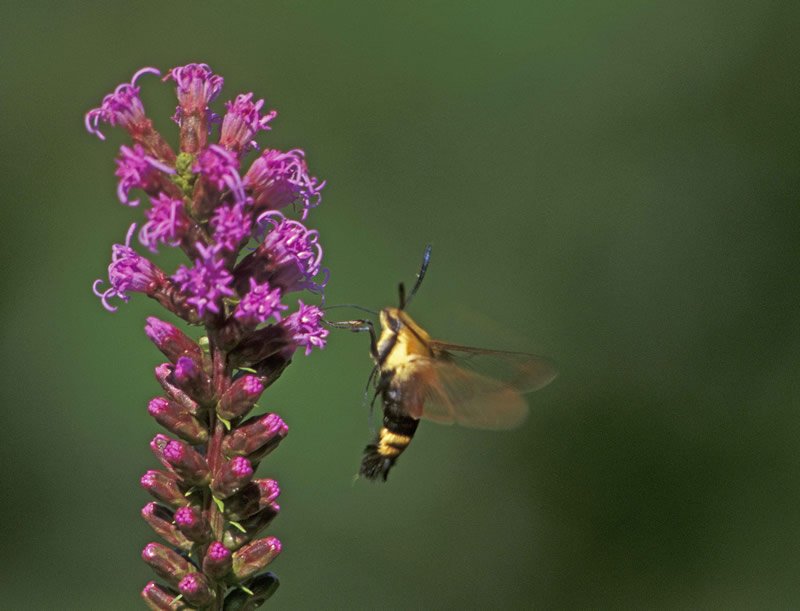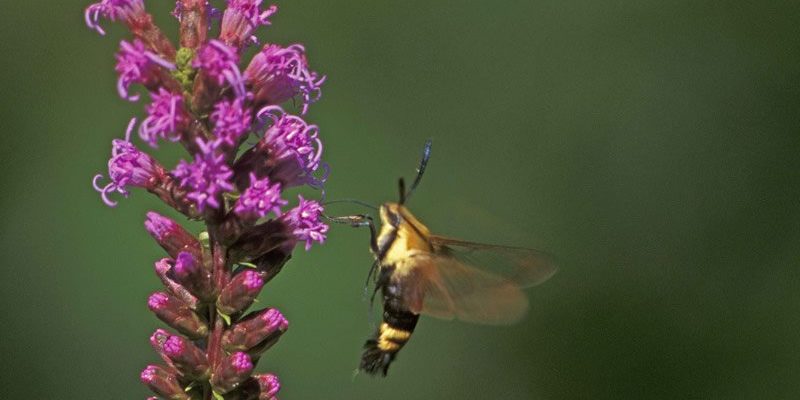
Beyond pollinating flowers, moths have a few other surprising responsibilities that you might find fascinating. It’s like they’re multi-talented workers in the world of nature, offering their services without expecting anything in return. From serving as food for other wildlife to helping decompose organic matter, moths are busy little creatures with an important job. Let’s explore the different roles these remarkable insects play and why they matter more than you might have thought.
The Pollination Process: How Moths Get the Job Done
Moths are primarily nocturnal, which means they’re more active when the sun goes down. This is part of what makes them such great pollinators. Many flowers that bloom at night have evolved to attract these nighttime visitors. They often emit strong scents and produce white or pale-colored blooms to be easily seen in low light.
When a moth lands on a flower, it doesn’t just hang out there. As it sips nectar, its furry bodies collect pollen grains. When it moves to another flower, some of that pollen gets transferred, allowing for fertilization. You might be wondering how effective they are compared to other pollinators. While bees are fantastic at this job, moths can cover a different niche, especially in habitats where night-blooming flowers are common. This diversity in pollination is crucial for healthy ecosystems.
Moths are particularly vital for certain plants, like night-blooming jasmine and some types of cacti. These plants have adapted to rely on moth pollination, so without these insects, they’d struggle to reproduce. It’s a beautiful example of nature’s interconnectedness, where one creature’s contributions are key to another’s survival.
Feeding the Food Chain: Moths as Prey
Moths don’t just pollinate flowers; they’re also a significant food source for various animals. From birds to bats and even some reptiles, many creatures rely on moths as a part of their diet. For instance, owls are known for their keen night vision, allowing them to swoop down and snag moths in the dark.
Think about it this way: every time a moth flits by, it might be dinner for a hungry bird. This relationship emphasizes the role of moths in the food web. By providing sustenance for other animals, moths help maintain balance in the ecosystem.
This keeps populations in check, preventing any single species from becoming too dominant. It’s like a well-oiled machine. If moths disappeared, the animals that rely on them for food would suffer, leading to a ripple effect that could disrupt the balance of nature.
Natural Decomposers: Moths and the Cycle of Life
Another crucial job that moths do is helping break down organic matter. Some moth larvae, known as caterpillars, feed on dead plants and decaying wood. As they munch away, they help decompose this material, returning nutrients to the soil.
Here’s the thing: healthy soil is vital for plant growth. So, when moth larvae break down organic matter, they are indirectly supporting future plant life. You might not see this process happening, but it’s essential for maintaining the health of ecosystems.
Without these natural decomposers, we’d have a buildup of dead plant matter, which could lead to various environmental issues. Moths, in this role, are like nature’s recyclers. They ensure that nutrients cycle back into the earth, enriching it for new growth.
Contributing to Biodiversity: Moths and Plant Diversity
Moths are also essential players in promoting biodiversity. By pollinating a variety of plants, they help maintain diverse ecosystems. This variety is vital for resilience against diseases, climate change, and habitat loss.
Diverse ecosystems support a wider range of species, each playing its role in the environment. Think about the difference between a vast, varied forest and a single-species landscape. The more species present, the healthier the ecosystem.
Additionally, many plants that rely on moths for pollination have unique adaptations that make them special. These adaptations can lead to the development of new plant species over time, adding even more diversity to the ecosystem. Moths help keep this natural cycle moving forward, promoting the health of our planet.
Challenges Faced by Moths
Unfortunately, moths face several challenges today. Habitat loss, climate change, and pesticide use threaten their populations. Urban development and agricultural expansion often destroy the natural habitats moths need to thrive.
Moreover, with climate change altering weather patterns, moths may struggle to find the flowers they rely on for food. You might be wondering how this affects us beyond just the moths themselves. Well, reduced moth populations can lead to decreased pollination, which affects plants that provide oxygen and food for many species, including humans.
It’s crucial to take steps to protect these valuable insects. Simple actions like planting native flowers in your garden can help create a welcoming environment for moths. These efforts can make a real difference in supporting their populations.
How to Attract Moths to Your Garden
If you want to encourage moths to hang out in your garden, there are several strategies you can try. Here are a few tips:
- Plant Night-Blooming Flowers: Choose flowers that open at night, like moonflowers or evening primrose.
- Avoid Pesticides: Reducing chemical use will create a safer environment for moths.
- Create a Light Source: Moths are attracted to light, so placing a light fixture away from your home can lure them in.
- Provide a Water Source: A shallow dish of water can help keep moths hydrated.
By implementing these ideas, you’ll not only enjoy the beauty of moths but also contribute to their well-being, supporting the ecosystem’s health.
Final Thoughts: Embracing Our Moth Friends
Moths might not be the first insects that come to mind when you think of pollinators, but they play a valuable role in our ecosystems. From pollinating flowers to serving as food for other animals and helping decompose organic materials, these fascinating creatures contribute in many ways.
As we continue to protect and appreciate wildlife in our backyards, let’s not overlook the humble moth. They deserve our care and attention, just like the bees and butterflies we often celebrate. So, next time you see a moth flitting by, remember that it’s not just a bug but a vital part of the natural world, quietly doing its important jobs.

